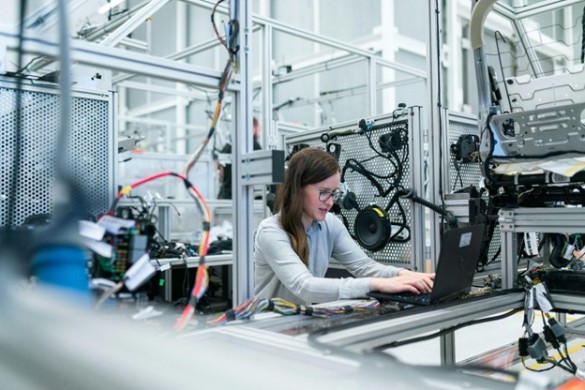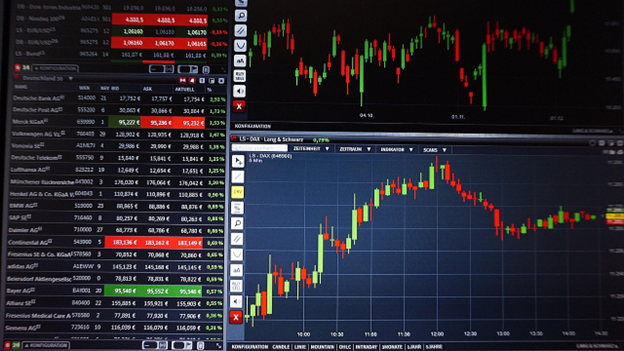The year 2025 is another turning point in technology, with momentum in various emerging areas. The tech industry has regained its growth trajectories around innovation and infrastructure after years of recovery and recalibration after global economic slowdowns. Investors are again taking a keen interest in the next source of returns, whether it be AI-driven industries or clean energy applications.

The Growing Digital Entertainment and the iGaming Sector
The digital entertainment industry has been able to withstand the changing markets. More accessible technology and increased internet speeds have all helped streaming, mobile gaming, and iGaming platforms. Australia, as well as most of the developed world, is still experiencing high involvement in online gaming networks that extend beyond the local boundaries. These sectors have established consistent user bases that grow each time new technologies make the process of accessing and paying for entertainment frictionless.
Among that, the iGaming category is one of the most consistent sources of revenue. The convenience that has been the driving force of this economy is seen in the increased accessibility to play pokies online. It is not just about games, but the extent to which online systems can recreate face-to-face experiences with added efficiency. This reflects the wider trends in fintech and mobile app development, where payment gateways and instant processing are now the norm and not the luxury. To investors, the moral is obvious: industries that enhance accessibility or ease of use are likely to remain stable even when the external markets change.
Artificial Intelligence Becomes Infrastructure
AI is no longer an experimental feature, but a component of almost all software and industrial platforms. Australian firms have been making consistent investments in machine learning in logistics, agriculture, and healthcare, and this domestic orientation is already paying off. The AI market is expected to be valued at over USD$300 billion this year, and a significant portion of this expansion will be in industries that integrate AI tools into their daily processes instead of creating products that are AI-based.
To investors, the opportunity is not just in AI developers, but also in companies that construct services around it, which include data-labelling companies, analytics consultancies, and hardware manufacturers that enable faster computation. With the increased number of small businesses adopting AI to run their internal operations, the market has expanded to cover local service providers, many of which are located in regional hubs, not in large cities. This diffusion is indicative of a long-term trend of decentralisation, which has been central to the wider technology environment in Australia.
Clean Technology and Renewable Energy
Renewable technology is also one of the most robust long-term investment categories, and 2025 is proving to be a year of consolidation and not experimentation. Solar and wind projects have become bankable assets, and energy storage and hydrogen fuel are becoming the new commercial frontiers. The continued encouragement of green infrastructure by the government has also increased investor confidence, particularly as tax incentives and public-private partnerships remain in line.
Clean tech has become more of a software-driven game than a hardware-driven one. Renewable systems are being surrounded by a new layer of digital infrastructure, including smart grid management, predictive maintenance, and AI-driven energy forecasting. To investors, this implies that clean energy does not just consist of turbines and panels, but also the platforms on which they can be effectively used. Most of these firms are dual-exposed: they create local economic value and export software models and data systems to the rest of the world.
The Growing Market Value of Cybersecurity
Cybersecurity remains among the most appealing areas to invest in both locally and internationally. The transition to remote work and cloud-based operations has established a long-term requirement for protection at all levels of digital operations. Australian companies, especially in the financial and health sectors, are devoting larger shares of their budgets to network protection, identity verification, and data-loss prevention.
The cybersecurity market worldwide is projected to exceed USD$200 billion in 2021, yet the local importance lies in the emergence of specialized companies that focus on niche security issues. These are endpoint protection of IoT devices, encryption services of fintech platforms, and compliance-as-a-service solutions of regulated industries. Specific education programs have also increased the talent pool of the country in the field of cybersecurity, providing domestic companies with an advantage in the competition on the international market.
High-Performance Hardware and Quantum Computing
Quantum computing is still in its infancy as a commercial technology, but it is among the most monitored technologies by institutional investors. The development of Australian universities and research institutions is still appealing to multinational hardware companies to partner. The value of quantum is not yet in consumer products but in its potential in the long term to revolutionize industries like materials science, logistics, and pharmaceuticals.
To the periphery investors, there are high-performance hardware, cryogenic systems, and software to optimise quantum algorithms. These secondary sectors are frequently developed early, before quantum systems become mainstream. With the maturity of the field, the focus on research collaboration in Australia places it in a good position in terms of innovation and export potential.
Health Tech and Personalised Medicine
Healthcare technology is also a growth leader with digital tools penetrating clinics, hospitals, and even homes. Remote diagnostics, telemedicine, and AI-based drug discovery platforms have become stable investment areas. The fast proliferation of wearables and data-driven wellness tracking has also established a connection between consumer electronics and medical science.
The healthcare system in Australia has been fast to test these technologies, particularly in rural regions where access has been a problem in the past. This combination of innovation and need has created new sources of funds for start-ups that are concerned with local issues that are subsequently applied internationally. Health tech is a blend of two appealing investor characteristics: stable demand and scalable technology.

 Hot Features
Hot Features













